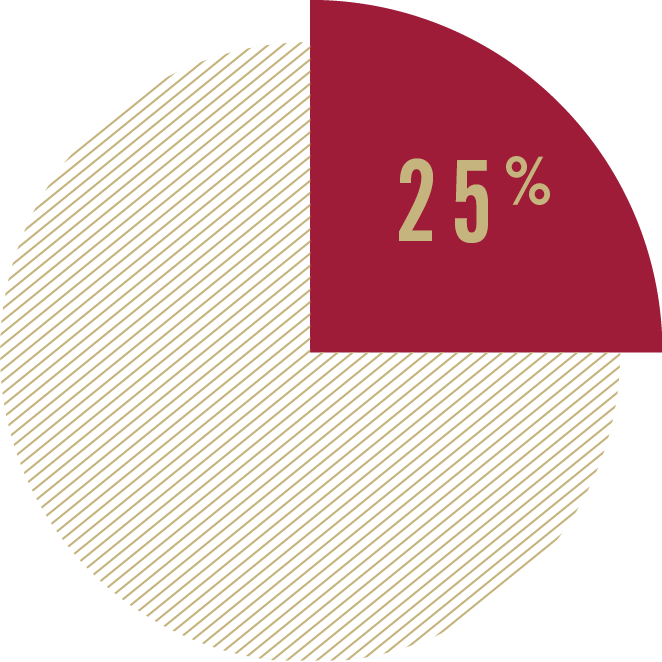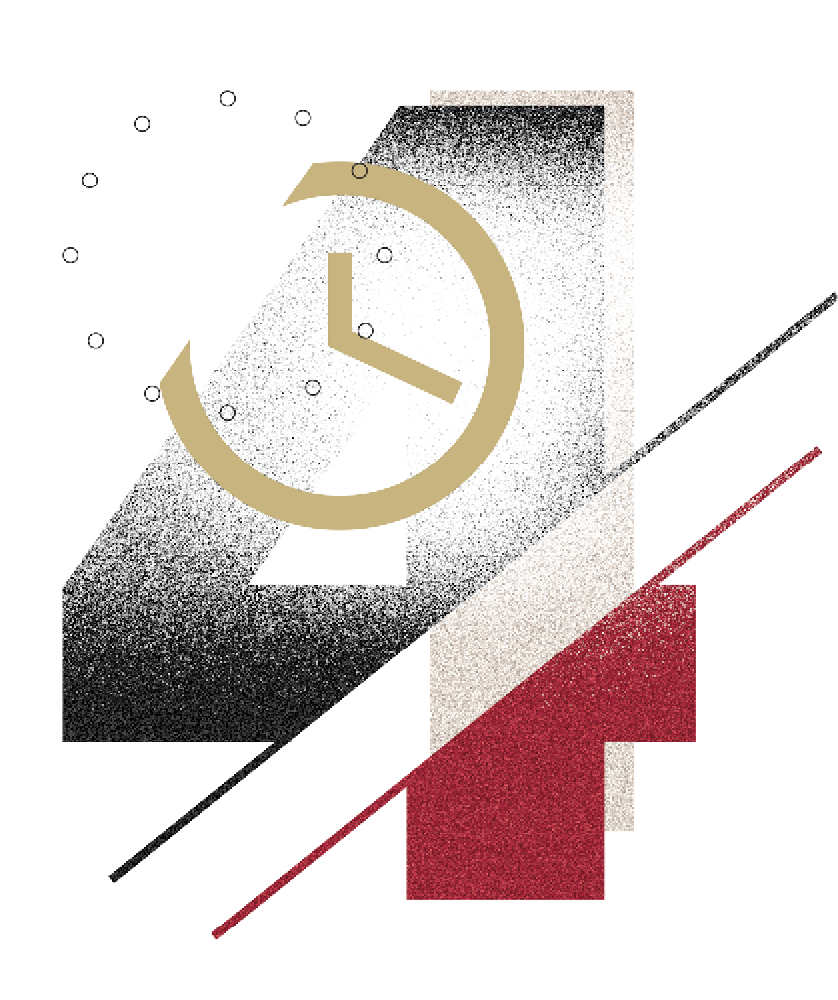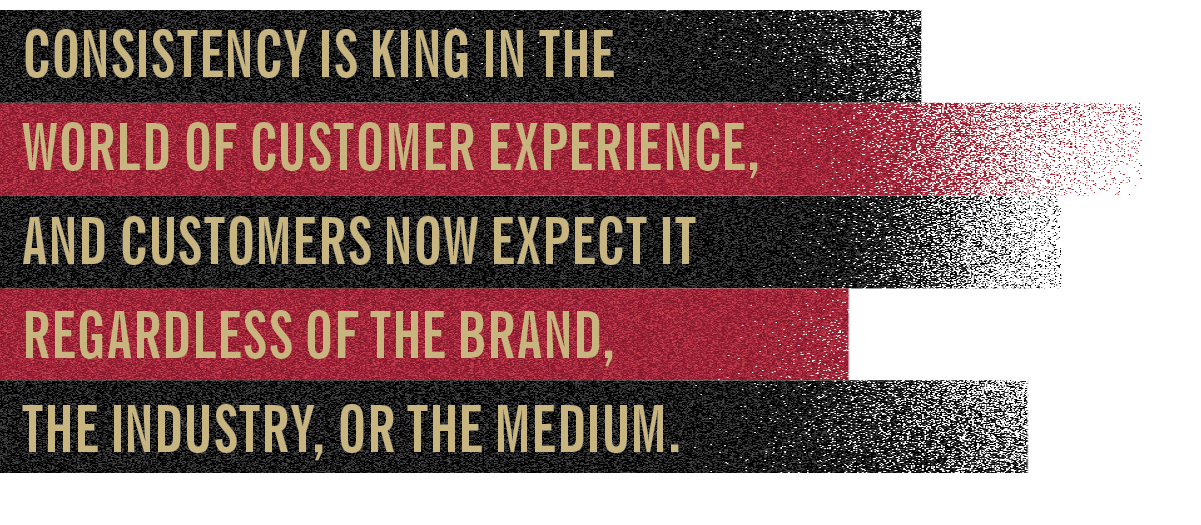Atlanta United FC is one of the most successful expansion franchises in American sports. The attendance, growth, and success they have experienced in their first two years are the envy of sports organizations nationwide. The team led the league in attendance in 2017, their inaugural season, and has done so again in 2018, drawing 26 percent more spectators than the next closest club.
The team’s 50,000-plus fans per game is the highest average for any professional sports team in North America that’s not in the NFL. They’ve sold more season tickets than most MLS stadiums have seats. Midway through their 2017 season, the team accounted for 25 percent of the entire league’s merchandise sales on the MLS on-line store.
And they’re good. Really good. After finishing fourth last year, the Five Stripes, as they’re known locally, won the city of Atlanta’s first championship since 1995.
How have they been so successful, deep in the south where college football reigns? There is a myriad of explanations, but one principle lies at the core of them all: an organizational focus and commitment to customer experience. Here are five lessons the Five Stripes have embodied, and how their focus on customer experience has driven them to success.

Start With a Goal
Start with a goal and put your customer at the core of it. For Atlanta United and owner Arthur Blank, that goal was, “A world-class club. A global force in soccer. A dynamic, sustainable brand. Stewards of the community. Winners.” Yes, they would need a great team to do so, but their customers, the fans, remained central to that goal. The organization recognized that both winning and winning with an appealing brand of soccer were important to their fans.
The team spent the next several years leading up to the first kick—building an experience, a club, and a stadium focused on just that. They made splashy, strategic international signings, bringing on young, offensively gifted players. They inked an offensive-minded head coach to maximize the team’s potential. Those two tactics alone have resulted in one of the league’s most potent goal-scoring attacks.
Ownership spared no expense on a $1.2 billion stadium tailored to the fans’ experience. There are few places in the stadium where you can’t see the game. If you leave your seat, the sightlines from the mezzanines around the stadium to the field are largely unobstructed. And if you happen to lose sight of the field, you’ll find the game on a TV nearby, restrooms included.
The results so far? United is a championship favorite, whose average attendance ranks in the top 20 in the world. This success, both on and off the field, has already garnered the attention of clubs worldwide. Several European club executives visited Atlanta to see what’s behind it all, and other international clubs are attempting to poach United’s players and staff.
In retrospect it may seem like common sense: If the team is good, fans will show up. Though
true to an extent, this thinking is shortsighted and not the recipe for sustained success. The Five Stripes did not fall victim to the “If you build it, they will come” line of thought that often traps organizations.
Atlanta United recognized that delivering the optimal fan experience would be a critical component of their success and an important step to accomplish their lofty goal of competing on the world stage. The five stripe branding in their logo embodies this ethos of success and customer focus. Each stripe represents a pillar of character—unity, determination, community, excellence, innovation—and serves as a reference point for the entire organization. Consider your organization: What is the winning team you need to accomplish your goals? What are the key touch points, products, and experiences that will capture your customer? Do key decisions align to customer considerations and organizational values and objectives? Be intentional about the organization’s goals for where you want to be tomorrow and five, 10, or 15 years down the road.
Establish goals and recognize that your customers are the ultimate driver of success from the onset. The goals and recognition will serve as a valuable reference point as you progress, ensuring that key decisions remain aligned to the goals and customers for the duration of your initiatives.

Establish a
Customer-First Culture
Putting the customer at the center of goal setting and achievements enables an organization’s leaders to make decisions that consider the customers’ best interest. It’s equally important to reduce the degrees of separation from leaders to your customers. Reducing this distance encourages an emotional connection with customers, allowing leaders to not only preach, but practice a customer-first culture.
A customer-first culture starts with leadership, then permeates the organization. Atlanta United President Darren Eales eliminated the distance between his office and customers by spending time directly with fans in pubs throughout the city prior to the inaugural season.
United demonstrated their commitment to a customer-first culture at the club’s inception, inviting fans to choose the team’s name and colors. This commitment is also reflected in their marketing. The slogan now ubiquitous with the club, “Unite and Conquer,” always depicts fans with the word “unite,” embodying one of owner Arthur Blank’s six core values: “Put people first.”
Counterintuitively, a customer-first culture’s sole focus should not be the customer alone. Regardless of intention, the culture won’t stick if the people responsible for a customer’s experience are not informed, involved, or empowered to provide input.
Spoiler alert: Everyone in the organization is responsible for the customer experience.
A customer’s journey rarely starts and ends with a single touch point. It includes numerous touch points, spanning organizational functions and groups, and roles and responsibilities. Success depends on these integrated groups, like a soccer team depends on all 11 players on the pitch.
Soccer is unique in that a single individual cannot singlehandedly carry an otherwise lackluster team to the top. It is more dependent on teamwork than other sports and exemplifies the idea of being only as strong as your weakest link.
In a business, a customer may have 99 out of 100 great interactions within their journey. However, if just one results in a poor experience—long concession lines, not enough bathrooms, inaccessible stadium, terrible parking—they will remember the negative experience as much as, if not more than, the good ones. Even if their team wins, they will carry the negative experiences with them.
Communicate the importance of putting the customer first to all levels of the organization. Make employees stakeholders in the delivery of a delightful customer experience by involving them in voice-of-customer readouts and inviting input on customer experience challenges. Reward them for contributing positively to a customer’s experience. An engaged workforce will deliver higher levels of customer experience, regardless of role or function.
A security employee changed companies from his previous security agency to the one that would service the new stadium—following United to its new home. He was quickly embraced by fans at the new Mercedes-Benz Stadium after he was seen celebrating exuberantly with fans following a United goal. In a position normally associated with stoicism and detachment, this employee’s passion improved the experience for those around him, and his company rewarded him, saying the supporter’s section would be his from then on.
Consider the ways you put your customers first. Do you lead by example? At what point in the decision tree does the customer enter? Do you have a mechanism to capture employee feedback? Do you consider all employees partners in the customer experience journey? Do their incentives align with instruction and communication from leadership? Establish a customer-first culture to delight customers at every point in their journey.

Gain Customer Insights
It is well known in the United States that the popularity of soccer is highest in metropolitan areas, particularly in urban centers. Atlanta United plays in an ethnically diverse core, surrounded by a metropolitan sprawl of transplants. The organization recognized the appeal their roster and team would have to fans in the area, especially Latin Americans and Millennials.
United’s stars hail predominantly from South America, and their coach, an Argentine, coached the likes of Lionel Messi for the storied FC Barcelona. What did United do with this information? They seemed to consider the personas of their fans and fans in other established soccer cultures to provide authentic, tailored experiences to them.
Rather than force a manufactured game-day experience, United relied on the fans and their passion to create the experience organically, building on a culture already successful in Latin America and Europe, and appealing to their fans’ desire for self-expression. United did their part to remove barriers that would impede the experience, encouraging the use of drums and fan artwork during pre-game festivities and the match.
The result? A true spectacle on game days, unique to any sporting event in the city.
United also utilized surveys and focus groups to gather input from their earliest supporters on the team name. Instead of predefining team names for selection, they asked questions regarding perceptions of the city of Atlanta and how the team should be represented. They also used Likert scale questions to judge favorability of elements and words associated with the team. These non-prescriptive methods resulted in an organic name, Atlanta United FC, that President Darren Eales said reflected the views of the team’s supporters.
Too often, a decision is made on gut instinct, tribal knowledge, or assumptions from previous experience. As valuable as instinct and experience may be, this method of decision-making leads to gaps between the experience delivered and the customer’s actual expectation.
Data gathered from activities like conducting surveys and focus groups, analyzing market and demographic information, defining customer segments and personas, examining web and mobile application behavior, and SWOT analyses will help formulate customer needs you can address through the delivery of their experience.
The data should also be treated as an asset with the potential to be leveraged by possible vendors and other third parties looking to market and sell their goods and services to allow for a more cohesive and immersive customer experience. An advertisement for baby food while shopping for baby clothes is a friendly reminder, while the same advertisement on an LED board at a United match would be confusing and distracting. If you can create, store, and provide an accurate, insightful representation of your customers, your customers will receive more relevant advertising across the various touch points of their journey, enhancing their overall experience.
How does your organization make decisions? Are you gathering insights from a variety of sources? When and how are you capturing customer insights? How are you leveraging these insights to improve the experience of your customers? The importance of gaining insights on your customers cannot be overstated. Use these insights to make data-driven decisions and deliver an experience that exceeds customer expectations.
League Attendance Leader
2017, 2018
26 percent more than next closest club
Game Attendance Average
53,000
Highest average for any professional sports team in North America that’s not in the NFL
Percent of League on-Line Merchandise Sales

Midway through their 2017 season, the team accounted for 25 percent of the entire league’s merchandise sales on the MLS on-line store.

Involve the Customer Early and Often
When owner Arthur Blank and President Darren Eales were interviewed prior to the debut of Atlanta United, reporters inquired about the team’s name and colors. What would they be? The two responded consistently and emphatically: They wanted the fans’ input. They involved their customer almost from day one.
It was a simple gesture that established trust amongst fans and created a sense of fan ownership. When customers feel like stakeholders, they are more likely to be loyal and advocate for your brand. Additionally, the mentality of obtaining voice-of-customer data from the start permeates the organization and sets the tone for continuous improvement and the direct incorporation of feedback into initiatives.
It is important to hear directly from customers, inviting their input whenever and wherever possible—through suggestion boxes, dedicated phone lines, surveys, panel discussions, focus groups, social media engagement, and monitoring online forums, to name a few tactics. However, the communication between customers and the organization should not be a one-way street. Organizations must communicate back to the customer, acknowledging receipt, thanking them for their feedback, and highlighting the incorporation of previous suggestions. Celebrate, promote, and implement great ideas from your customers. If there is a breakdown in customer experience, acknowledge it, address it, then communicate the improvement. The two-way communication lets the customer know you’re listening.
Gather voice-of-the-customer information and communicate changes and successes back to your customers. Remove barriers in feedback loops. Don’t provide a 100-question survey when a few questions will capture what you need. Acknowledge faults and promote your successes and positive changes. Customers may not recognize a change, but they’ll appreciate it once it is communicated.
Continuously involving the customer is just one part of the equation. The other is the perspective of your organization’s employees. Employees can provide insights into customers and their experiences as they interact with the customers both directly and indirectly, throughout the customer journey. Atlanta United employs a mechanism to capture customer feedback straight from their employees.
After each game, members from every aspect of the game-day staff meet to discuss what went well, what did not, and what needs to be improved for the next game, like Agile standups, where blockers and challenges are discussed daily.
In each instance, it’s critical to have the right people in the meetings. Involve those who can interact directly with customers and those can provide guidance and make decisions to relieve bottlenecks and resolve issues.
When do you engage customers for input? How do you acknowledge their feedback? Do your treat your customers as stakeholders? How do you involve employees in the customer experience improvement process? Engage your customers early and often and leverage the frontline knowledge of your employees to build customer loyalty and close the gap between expectation and delivery.

Be Consistent
Consistency is king in the world of customer experience, and customers now expect it regardless of the brand, the industry, or the medium. It is a challenge for organizations to maintain consistency across the various channels through which a customer may interact.
The Atlanta United experience spans multiple channels. Think of a customer journey on a match day: check the starting 11 on the team website, pick out a jersey and scarf, reference the team mobile application for parking and stadium information, watch the game at Mercedes-Benz Stadium, purchase a jersey from the team store, check Twitter for in-game insights. Then after the victory, browse the various social media feeds for highlights and post-game updates.
Creating consistency across the customer journey is more than simply branding each touch point. Consider the consistency of experiences delivered, messaging communicated, and emotions evoked as you evaluate the overall customer experience.
The inaugural season approached with anticipation, but there was a small problem. The construction of Mercedes-Benz Stadium, the $1.2 billion behemoth, was behind schedule. United would have to open the season in Bobby Dodd Stadium, a relic compared to the glistening metal and halo LED displays of Mercedes-Benz.
The news could have discouraged the organization. The infrastructure of Bobby Dodd presented its challenges. For example, the team was forced to bus to their games at Bobby Dodd from their training facility in the suburbs. But the arrival of the team bus drew hundreds of fans who greeted the players as they made their way into the stadium. Both players and fans enjoyed the routine so much that the tradition continued at Mercedes-Benz. Sort of. Instead of commuting from the suburbs, the team now boards the bus at Mercedes-Benz, then drives around the block to the front gate, where the fans wait to greet them. United turned what developed naturally out of necessity into a tradition that carried over to the new stadium.
The match day rituals, rowdy sold-out crowds of 40,000-plus, and stadium-wide chants made the experience at Bobby Dodd so memorable for the first nine games that fans worried the charm would be lost in the new stadium.
Those concerns were quickly alleviated after a 70,000-plus opening day sellout in the Benz, with the same team arrival, the same hammering of the spike, the same A-T-L Viking clap, the same newly minted traditions that made the experience so endearing to fans.
Customers expect a consistent experience with a brand or product, no matter where they are. United delivered this consistency by transitioning the traditions and experiences most critical to the fan experience from one stadium to another.
Also consider consistency within messaging. Customers can actively engage with an organization—following it on social media, for example—or engage passively, seeing a mural or billboard while on a walk. The challenge for organizations is delivering clear, consistent messaging across
these media on both active and passive points of engagement.
Atlanta United has leveraged its bold five-stripe color scheme, logo, and mottos to do just that. United’s core customers live and spend their time in and around the city and generally prefer to engage with brands digitally. Their messaging and marketing meet the customers at these touch points.
Throughout the city, you’ll find the familiar black and red five stripes on train car wraps, bus stop signs, Beltline murals, highway billboards. “Unite and Conquer,” the aforementioned slogan, appears on these media as well. The themes used on static media, the passive points of engagement, are used consistently within United’s digital presence as well, the active points of engagement.
Their Twitter, Facebook, Instagram, and LinkedIn profiles all have the same profile picture—the red and black five stripes and the gold “A.” The content of their social media posts is also consistent and frequently the same, featuring players, fans, highlights, and soccer updates. United’s own mobile application loads with the same logo featured in their digital profile pictures, then opens to the familiar red, black, and gold color scheme.
The use of color, branding, and “Unite and Conquer” imagery across media and engagement points emphasizes the boldness, energy, and passion of the organization.
Establishing an emotional connection is a critical step in establishing trust. Customers who trust brands or organizations are more like to be loyal and advocate for it. United sponsored 2018’s Pride Parade and continued to sell Pride-themed United merchandise afterward, creating a connection through inclusivity and self-expression at matches that fans and the community could bond over.
Within their mobile application, United created an automated concierge persona called Arthur, complete with a Bitmoji-esque rendering of team owner Arthur Blank. The fans and organization affectionately refer to him as Arthur and Uncle Arthur. This subtle inclusion in the app indirectly brings fans closer to the man at the top and reinforces Blank’s desire to listen and respond.

From the inception of the club, Blank and the team’s leadership wanted to give fans input into naming the team. That act alone established an emotional connection, conveying their willingness to trust and listen to their customers.
The organization recognized that their fans’ experience extended well beyond match day. They evoked emotions of trust and inclusiveness with social support initiatives, technology design, and fan engagement, uniting fans around a collective pride for the team and the city. This has resulted in one of the strongest supporting fanbases in Major League Soccer.
Put yourself in your customers’ shoes. As they move along the journey from touch point to touch point, is their experience consistent? Are they interpreting your messaging through passive and active channels as you intend them to do? Are your points of engagement fostering an emotional connection? Establish consistency in these areas to emphasize the core values of an experience or product, leaving no doubt how it should be interpreted.
What have we learned from Atlanta United FC? Align initiatives and key decisions to goals established at the start. Create a customer-first culture by empowering employees and leading by example. Leverage customer insights to make data-driven decisions. Involve your customers early and often to quickly incorporate feedback into experiences that will exceed expectations. Be consistent and deliver a cohesive and memorable experience to your customers.
Consider these five lessons as you evaluate your organization’s customer experience capabilities, and you too may experience success like the Five Stripes.
